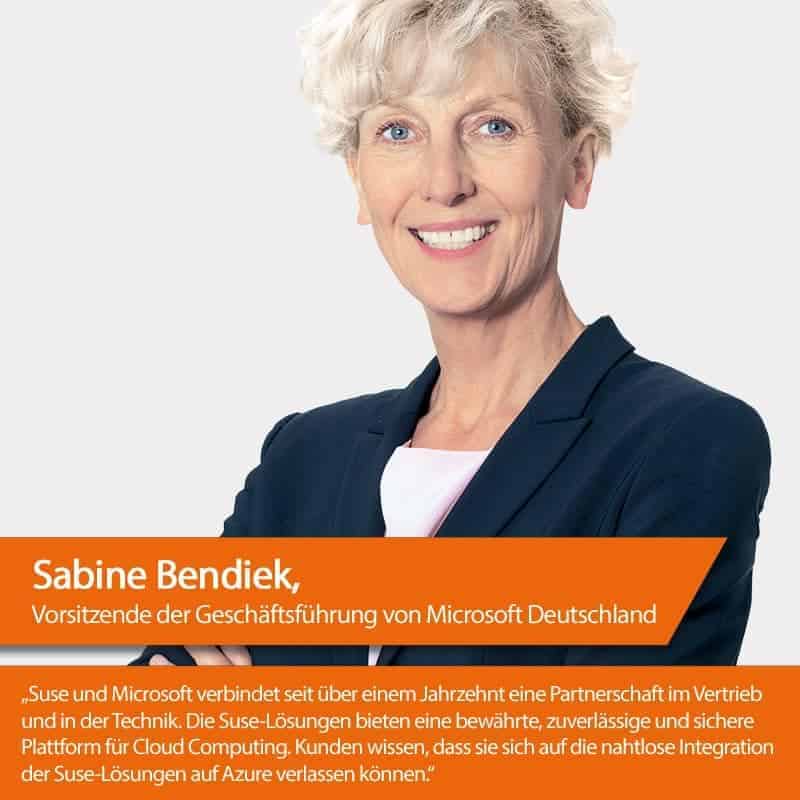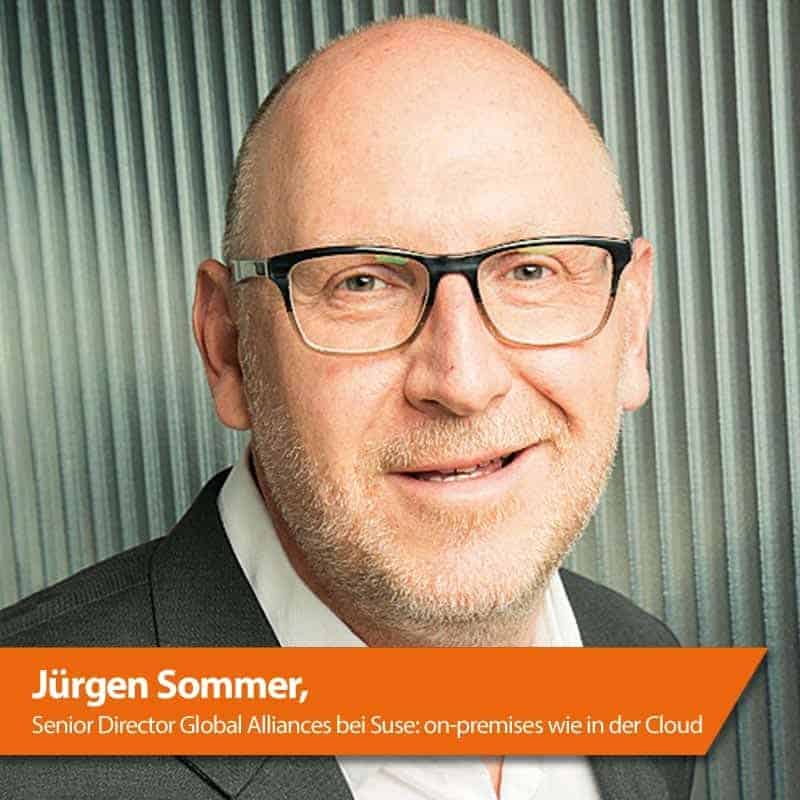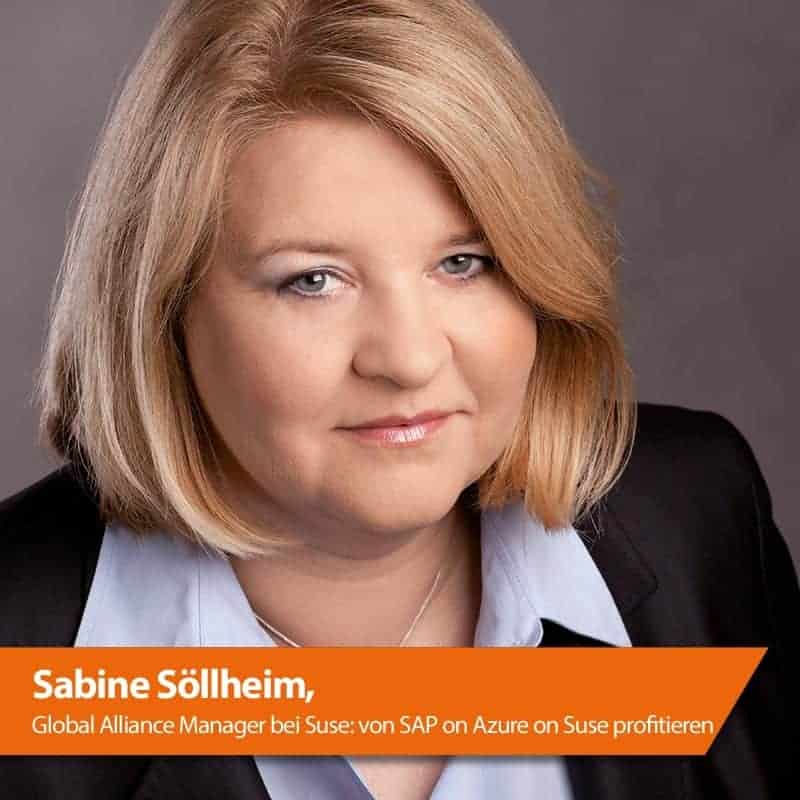SAP and Azure Value Community


Suse's conference room in the SAP Partner Port in Walldorf is generously sized. Several workshops on various SAP topics with different SAP partners and SAP were held here.
But at that series of workshops on "SAP and Cloud" with a focus on "SAP on Microsoft Azure with Suse", the room almost seemed a little too cramped in view of the large number of participants.
If the number of participants at the workshop in question is taken as a kind of barometer, the interest and need for information on cloud computing among SAP customers of various company sizes is higher than ever. To a large extent, this can be attributed to SAP's chosen path, namely to succeed as a cloud provider.
On the other hand, it is well known that digitization projects of companies without cloud use have feet of clay. It is therefore clear that the level of public cloud use by SAP customers will continue to rise steadily and the procurement of cloud services will continue to increase.
However, it is ultimately difficult to estimate the intensity with which the various SAP customers are relying on the different cloud services. Since SAP customers, especially those in this country, unlike those in North America, for example, stick to SAP on-premises use in their own data center in one way or another. This is the view of the German SAP user group DSAG, for example.
This means that they are heading straight for the port of hybrid cloud computing, which means maintaining a reduced on-premises deployment of whatever kind on the one hand, while relying on cloud services from a public cloud service provider on the other.
It can be assumed that SAP customers' appetite for the cloud will increase as they embrace the cloud. A kind of cloudization path: in a first step, use Infrastructure as a Service (IaaS) from a public cloud provider, then Platform as a Service (PaaS) or Software as a Services (SaaS) and so on. Of course, the services can be combined, depending on the respective company's needs.
Public cloud on the rise
The SAP community is intensively involved in the procurement of IaaS services via public cloud providers. For the first time, the DSAG association presented results on the topic of public cloud providers in the SAP environment in February 2019 as part of the annual investment survey among SAP users.
Here, Microsoft with its public cloud platform Azure was identified as the strongest force. Or, as published around SAP's Sapphire Orlando event in early May 2019: "More than 90 percent of the Fortune 500 now use Microsoft Azure and SAP."
Microsoft likes to use the term "SAP and Azure". According to this, migrating an SAP system to the cloud is much more than switching from local infrastructure to an IaaS offering.
From Microsoft's perspective, SAP is at the center of projects for digital transformation with Robotic Process Automation (RPA), Internet of Things (IoT) or Artificial Intelligence et cetera. From this perspective, the actual added value increases significantly through integration with PaaS services.
Nevertheless, Microsoft's goal is nothing more and nothing less:
"To provide the best available infrastructure for Hana or Hana-based applications and also to best support companies in their digital transformation projects or ERP modernization efforts."
To achieve this, SAP and Microsoft are committed to working together on Azure and providing a best-of-class offering. SAP and Microsoft can look back on more than 20 years of cooperation.
Market leader meets market leader
Suse has maintained an intensive partnership with SAP for almost as long, with numerous joint developments and thousands of joint customers. Suse is the preferred and recommended open source vendor in the SAP environment with a leading market share (estimated between 80 and 90 percent) in the Hana operating system used alone, Suse Linux Enterprise Server for SAP Applications.
"Our guiding principle is to provide SAP customers with the same solutions with the same features both on-premises and in the public cloud. In this context, we work with all well-known public cloud providers. Accordingly, also with Microsoft and in terms of Azure.
This applies to Suse Linux Enterprise Server, SLES for short, SLES for SAP Applications, and SLES for High Performance Computing, HPC. But also other solutions such as Suse Manager or the Suse Container-as-a-Service platform CaaSP, the CNCF-certified Kubernetes distribution from Suse."
explains Jürgen Sommer, Senior Director Global Alliances at Suse.
The relationship between Suse and Microsoft goes back decades, to the Novell era. And when Microsoft Azure went live in February 2010, Suse was there - with the first Linux availability on Azure ever (including developments beforehand).
As Marcus Sommer, Business Lead Azure Infrastructure at Microsoft, adds, "we maintain long and intensive partnerships with SAP and Linux distributors such as Suse. Together, we offer ready-made solutions here that can be deployed directly. By the way, we already have more Linux systems than Windows systems on Azure today."
SAP, Microsoft and Suse
What offerings and services does Suse provide to existing and new SAP customers in conjunction with Azure? What is the specific situation regarding Suse infrastructure solutions on Azure? Or: In what ways do Suse and Microsoft collaborate on Azure, as well as: What does the community of values of SAP, Microsoft and Suse mean in cloud computing?
By using IaaS services, many existing SAP customers aim to minimize the operating costs of their system landscape and move dev, QA and test systems to the cloud, for example.
Others, on the other hand, are focusing on the use case of obtaining the required peak load infrastructure resources from the cloud, for example for consolidations, seasonal business or annual financial statements, instead of designing their on-premises systems for such short-term peak load capacities. This is often referred to as "rightsizing".
The cloud can also be used to increase SAP High Availability (HA). By moving disaster recovery (DR) systems to the cloud and storing replicated DR data there to be transferred and used on an on-premises system in the event of a disaster.
Or, another cloud use case: SAP customers no longer want to go through a cost-intensive hardware refresh that becomes necessary from time to time. With IaaS use, this is also not necessary, since high-performance or sufficient resources for SAP use can be booked as subscriptions at any time, virtually at the push of a button.
It seems that existing SAP customers are increasingly transferring their SAP infrastructure completely to the cloud and thus saying goodbye to their SAP data centers. At any rate, Gartner analysts predict that companies will make increasing use of this.
Thanks to IaaS, it has never been easier to select and consume required SAP infrastructure resources via the cloud. Regardless of which options or objectives are associated with the move to the cloud by SAP customers.
The IaaS SAP-on-Azure offerings (hardware, storage, network resources) can be traced back to developments by SAP and Microsoft that are designed to meet the capacity needs of different SAP user sizes on a "T-shirt sizing" basis and are certified by SAP.
Peter Schinagl, Senior Technical Architect at Suse, explains: "We offer almost all Suse products on Azure, easily selectable via the Azure Marketplace. And with two payment models: firstly, pay as you go with time-based billing; and secondly, bring your own subscription. Here, only the cloud infrastructure is billed by the cloud provider. For both variants, images are made available in the Azure Marketplace."
If customers in the pay-as-you-go model operate systems that are run over a longer period, the purchase of a so-called reservation is the best option for keeping costs low. This allows a virtual machine (VM Reserved Instance) to be booked in advance for one or three years.
This reservation gives customers a discount of up to over 70 percent. Suse was the first partner on Azure to enable this for the operating system as well (Annual Reservations/Software Plans). Here, too, discounts of up to over 60 percent are possible.
For customers who need very large Hana systems, there are Azure Hana Large Instances. This is "purpose-built hardware" that is geared to the needs of large SAP customers. Otherwise, Azure VMs dominate, just like any other public cloud.
When it was said at the beginning that Suse provides the same solutions with the same functionality on Azure as on-premises, this means, for example, the following for the SLES for SAP operating system platform: The many features developed jointly with SAP for mission-critical and dedicated SAP (Hana) deployment are also available to SAP customers on Azure.
For example, live patching, workload memory protection, saptune, Hana hardening, Linux kernel optimization and security features - or Hana HA and DR based on the Suse High Availability Extension (HAE), a cluster software that is integrated in SLES for SAP and is used by many Hana on-premises customers. Schinagl emphasizes in this regard:
"This means SAP customers can also build and use highly available SAP systems on Azure using Suse HAE Cluster software."

Joint developments
"Suse's long-standing intensive partnership with SAP and Microsoft's partnership with SAP results in a special triad from which customers benefit when it comes to SAP on Azure on Suse. Yesterday, today and tomorrow. For example, they get bundled best-in-class solutions that best support their SAP cloud deployment with a wealth of experience from many thousands of SAP on-premises installations."
says Sabine Söllheim, SAP Global at Suse. The speed of innovation is above average. Numerous innovations or further developments in a short time underpin this picture. Three examples of the Suse-Microsoft collaboration on Azure to back up what has been said:
First, the deployment of SLES for SAP for Hana Large Instances on Microsoft Azure since 2016, which was of course preceded by various development activities. New since the middle of last year is that Suse creates the image as well as the VM images for the hardware installation. Thus, all Suse images on Azure are created by Suse.
For SAP customers, it is possible to use Hana configurations larger than 1.2 TB on Azure together with SLES for SAP. It is planned to operate or support SAP workloads/Hana environments via Azure up to 60 TB.
And it does so with ready-made SLES for SAP images. In this way, Suse and Microsoft are meeting the growing demand of SAP customers in particular to be able to use large Hana or Hana-based applications as part of their hybrid cloud deployment. For example, in the project to consolidate several ERP/ECC 6.0 systems into one S/4 system.
Second, Suse and Microsoft are pushing the optimization of the Suse kernel for Azure as part of a co-engineering effort.
And third, on Azure, Suse and Microsoft provide jointly developed templates for IaaS deployment specifically for SAP users based on Azure Resource Manager.
As Microsoft states, "many teams have adopted agile development methodologies with the move to the cloud. These teams are doing rapid iterations. They need to repeatedly deploy their solutions to the cloud and be confident that their infrastructure is in a reliable state.
Because infrastructure has become part of the iterative process, there is no longer a separation between operations and development. Teams must manage infrastructure and application code in a unified process. To meet these challenges, deployments can be automated and the infrastructure-as-code approach can be used."
In fact, Suse and Microsoft have relieved SAP users of a lot of work with these special templates. This makes it easy to roll out an SAP infrastructure with 20 VMs or more on Azure for use in the SAP environment, including SLES for SAP, in an automated manner and on the basis of a high quality process.
Customers benefit
The cooperation between Suse and Microsoft is characterized by a closely interlinked regional and global "doing", which also extends to the SAP Linux Lab. The Suse Global Alliance Team supports Microsoft in implementing the various scenarios.
There are joint teams at the technical, sales/marketing and support levels. Specific support issues or potential errors are dealt with as part of a weekly jour fixe.
Another team is responsible for the upstream changes initiated by Microsoft. If there are questions from SAP customers regarding SLES for SAP on Azure, a special Suse team is available for this as part of the 7×24 priority support.
Incidentally, Suse Germany and Microsoft Germany are responsible for the "SAP on Azure on Suse" workshop mentioned at the beginning. Joint webinars on various topics are also planned for the SAP community; on SAP on Microsoft Azure and Suse SAP solutions on Azure.
A key advantage of the combination of SAP, Microsoft and Suse is that all three partners are seen as providing support with world-class solutions for mission-critical and application-related SAP use in cloud computing.
Furthermore, the partnering of the three IT giants extends in part over decades and user companies from many industries and different company sizes benefit from this in several respects.
Technology Consistency
Likewise, the Suse-SAP collaboration is known to be very intensive. Numerous dedicated "for SAP solutions and functions" have been jointly developed and made available to the SAP community.
"Suse solutions meet all modern requirements for data center readiness with distinctive functionality optimized to the necessities or requirements of SAP customers. And in particular by reducing complexity, minimizing costs or providing reliable and innovative services."
emphasizes Jürgen Sommer from Suse.
In conclusion, it can be said that the group of cloud doubters in the SAP community is melting away in view of the factual advantages that public cloud use demonstrably brings. This does not mean that there will be no more SAP on-premises environments in the foreseeable future, but that a certain mix of on-premises and public cloud services will become established.
Suse has made far-sighted provisions for this. For example, by providing Suse solutions both for SAP on-premises operation and for public cloud use, such as on Azure.
Software defined approach
With version 15 (15.1) of SLES for SAP Applications, Suse supports deployments/transitions of business-critical workloads and applications both on-premises and off-premises to public cloud environments such as Microsoft Azure.
On top of that, it represents a so-called multimodal operating system platform in which traditional infrastructures, software-defined infrastructures (SDI) and application-oriented architectures can be operated or used in coexistence.
And it does so on a unified code base. Furthermore, SLES 15 for SAP Applications connects containerized and traditional development environments, including the combination of legacy applications and microservices.
In addition, the version offers improvements in the areas of: Minimization of downtimes, optimization of system performance and simplified deployment/management of Hana systems. Incidentally, SAP itself uses several Suse SDI solutions, for example, for the Hana Enterprise Cloud (HEC), for S/4 on-premises or for the deployment of S/4 in the public cloud.
Trusted Advisor in the SAP Community
Suse and SAP have been working closely and successfully together for over 20 years and maintain a "Worldclass Partnership". Suse also maintains a number of partnerships with SAP partners, including Microsoft.
Today, Suse is the preferred solution provider and partner in the SAP community for several thousand companies around the globe and from virtually all industries that use SAP technologies and solutions.
What's more, Suse is regarded as the trusted advisor and "safe bet" when it comes to SAP deployment. An estimated 80 to 90 percent of all Hana installations use Suse Linux Enterprise Server (SLES) for SAP Applications both on-premises and via public cloud providers - also because Suse provides numerous SAP- and Hana-specific features. (SLES for SAP is currently available in version 15.1).
Of course, this includes all Hana-based SAP solutions, such as S/4, BW/4, C/4 and SAP Data Hub. In addition to SLES for SAP Applications, Suse provides the CaaS Platform (container management/Kubernetes implementation from Suse), Suse Enterprise Storage (Ceph) as storage or Suse Manager (for enterprise system management) to increase the degree of automation in Linux operation.
The Trusted Advisor position in the global SAP community is also underpinned by the following fact: At the annual SAP Innovation Awards, formerly the Hana Innovation Award, companies are honored that have used SAP platform technologies in a special way to realize business transformation in an innovative way and with an implementation of digitalization.
This always takes place as part of the SAP customer event Sapphire. Suse was also able to shine last year. The clear majority of all SAP Innovation Award winners and participants use solutions from the open source innovator Suse.











